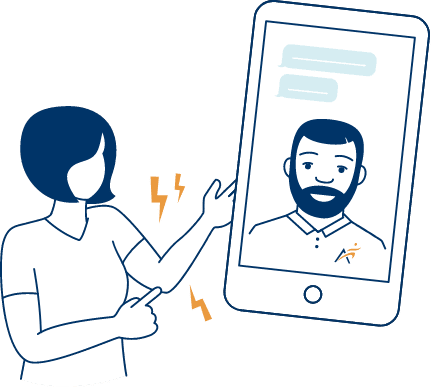- About
Who We Are
Partner With Airrosti
Testimonials
- Locations
Nationwide Care
Our virtual care option, Airrosti Remote Recovery is available nationwide.
Find A Location Nearest You
- Injuries We Treat
- No Cost Assessments
- Virtual Care
- Careers
Our virtual care option, Airrosti Remote Recovery is available nationwide.
(21,000+ reviews on Google across 150+ locations)
In this video, Jenay Zelaya, DC discusses common conditions typically associated with sciatica and sciatic-like pain. She also reviews three simple exercises you can do to help relieve sciatic pain.
Sciatica is a symptom of an underlying medical condition—it is not a medical diagnosis in and of itself. The term sciatica describes the symptom of nerve pain that radiates down the leg. You may also experience the following symptoms:
The sciatic nerve is the largest and longest nerve in the body—running from the lower back, through the buttock, and splitting to run down the back of the legs. It is responsible for controlling muscle movement in the thigh and other parts of the leg as well. An condition that causes inflammation or irritation to the sciatic nerve can result in pain to the area.
Common conditions resulting in sciatic pain include a herniated disc, lumbar spinal stenosis, piriformis syndrome, or an injury to the lower back that puts pressure on the sciatic nerve.
Sciatica is the name given to pain caused by irritation of the sciatic nerve. Anything that irritates the sciatic nerve can cause pain, ranging from mild to severe. Sciatica is usually caused by a compressed or pinched nerve in the lower spine.
Common causes of sciatica can include a herniated disk and a narrowing of the spine canal (called spinal stenosis). Everyday movement and injury also contribute to conditions that are the underlying causes of sciatica.
Episodes of sciatic pain tend to occur when excess pressure is placed on tight or imbalanced piriformis or hamstring muscles. Sciatica flare-ups can have a number of causes, including:
Sciatic-like pain is very common problem with a multitude of causes. Proper diagnosis can be difficult and — given the limited time many providers have to spend with each patient —usually requires imaging and other costly diagnostic tests. Treatment tends to focus more on affecting the symptoms and not treating the actual condition. Treatment options usually involve rest/limited activity, medications for pain relief, epidural steroid injections, and weeks of therapy.
Because sciatica can be a symptom of several different underlying problems, it’s important to seek care from a skilled musculoskeletal provider. Airrosti providers can help diagnose your injury and identify the specific cause of your symptoms. Your provider will then recommend an individualized treatment plan to eliminate the true source of your pain and prevent future recurrence.
If you’re suffering from sciatic-like pain, schedule your Airrosti appointment today.
Reviewed by Casey Crisp, Doctor of Chiropractic
Disclaimer: Always consult with your doctor before starting any exercise program. If you experience any numbness, tingling or reproduction of your symptoms, please contact your doctor.

I saw Dr. Crawford at the student clinic for lower back pain & sciatica. She was very thorough, provided me with a treatment plan, treatment & exercise program to eliminate my pain. I was feeling better in a couple of weeks. I appreciate all she did & also the wonderful staff!
by Sandra DeVelasco
